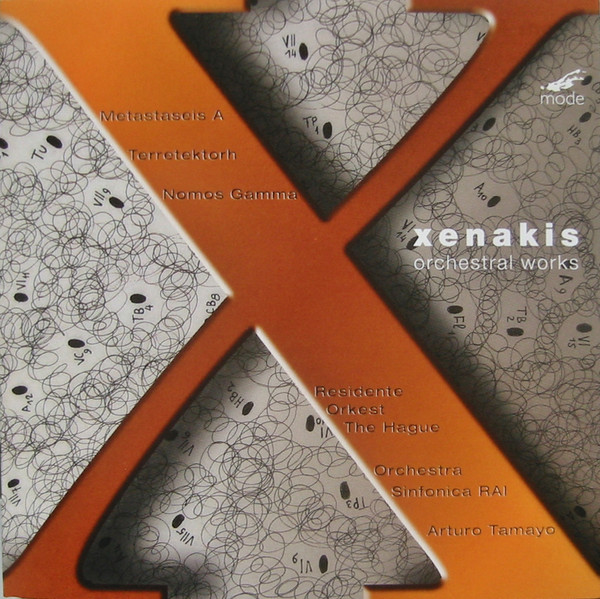
 |
|
 |
Format: CD Label & Cat.Number: Mode Records MODE299 Release Year: 2018 Note: METASTASEIS A (1953-1954) for 65 musicians, TERRETEKTHORH(1965-66) for 88 musicians, NOMOS GAMMA (1967-68) for 98 musicians, the latter with the musicians distributed in a large circle in the audience... "the listener, each one individually, will find himself either perched on top of a mountain in the middle of a storm which attacks him from all sides, or in a frail barque tossing on the open sea, or again in a universe dotted about with little stars of sound, moving in compact nebulae or isolated."
Price (incl. 19% VAT): €17.00 More InfoXenakis Edition 15“Metastaseis A” (1953-54), original version for 65 musicians. Orchestra Sinfonica RAI. “Terretektorh” (1965-66) for 88 musicians dispersed among the public. Residentie Orkest The Hague. “Nomos Gamma” (1967-68) for 98 musicians dispersed among the public. Residentie Orkest The Hague. The orchestral works on this recording include two of Xenakis’ adventurous + spatialized works along with Metastaseis, the work with which he emerged onto the international avant-garde scene. Metastaseis A is the original version, which is better known by its revision, Metastaseis B. The revision was the result of conductor Hermann Scherchen, who was critical of the size of the score and of elements of its instrumentation. He agreed to perform it if certain revisions were made. Ultimately, the première of the revised version, Metastaseis B, would be conducted by Hans Rosbaud at Donaueschingen in 1955, where it created a sensation. The public would have to wait until after the composer’s death before hearing the original version of Metastaseis A, which took place in 2008 in Torino under the direction of Arturo Tamayo, who conducts the work in this recording, its first commercial release. Xenakis explained that the sound world of Metastaseis was inspired by his experiences as a member of the student Resistance during the Nazi occupation of Greece. Terretektorh and Nomos Gamma are companion works. Both were composed in order to be performed with the orchestral musicians distributed in a large circle with audience members interspersed among the musicians. Both works feature a large string ensemble and complements of woodwinds and brass. The larger number of musicians in Nomos Gamma is due to an increased number of bassoons, trumpets, horns, and percussion.#Terretektorh, which Xenakis referred to as a “sonotron”— essentially a musical particle accelerator – also references Xenakis’s own experiences of solitude in nature: “[A] shower of hail or even a murmuring of pine-forests can encompass each listener … the listener, each one individually, will find himself either perched on top of a mountain in the middle of a storm which attacks him from all sides, or in a frail barque tossing on the open sea, or again in a universe dotted about with little stars of sound, moving in compact nebulae or isolated.” Among the extraordinary effects in this work are hand-held percussion instruments played by the non-percussion orchestral members – whips, whistles, maracas, and wood-blocks – that help to convey the sense of the listener being buffeted by wind, rain, and hail. In Nomos Gamma, the listener is struck by the increased size of the percussion section, which rings the orchestra and audience, lending a kind of ritual brutality to the piece. |
| © 2007 Drone Records | | Celler Strasse 33, 28205 Bremen, Germany | Privacy and cookies policy | Impressum / Allgemeine Geschaftsbedingungen / Haftungsausschluss | Links to the scene |